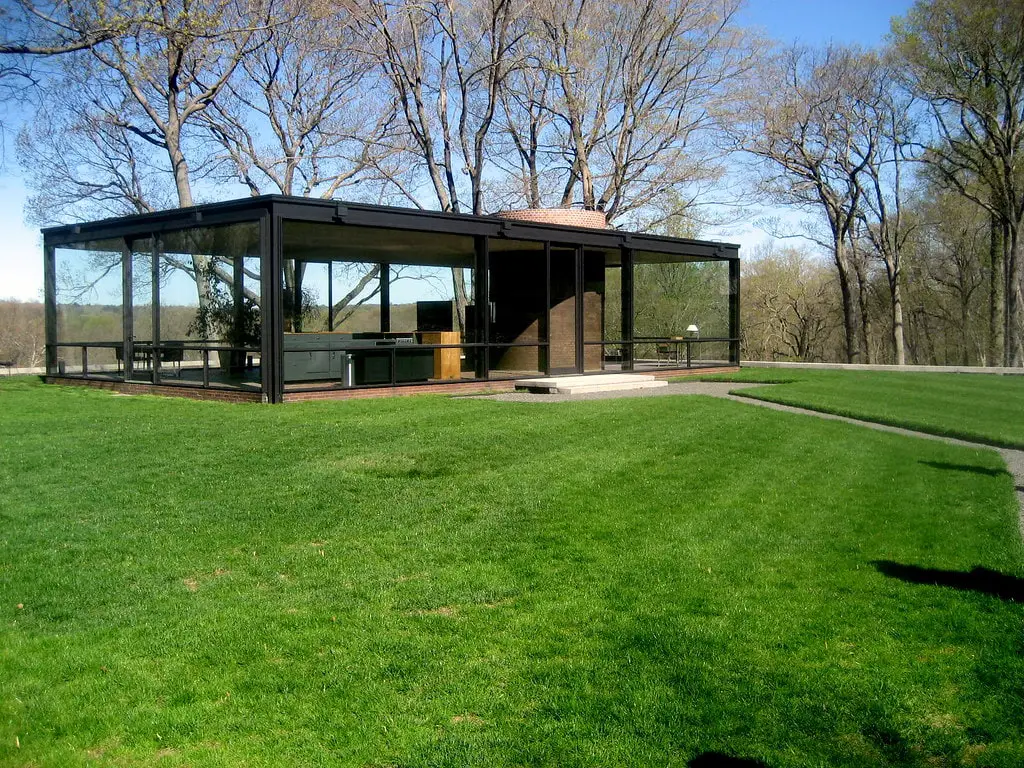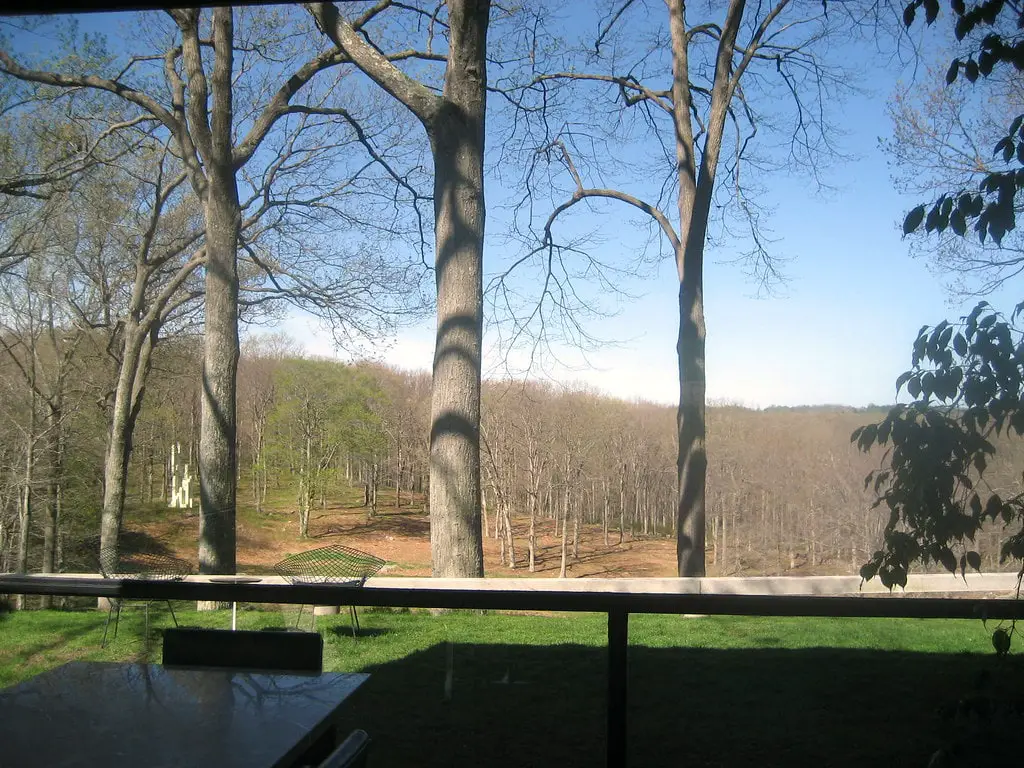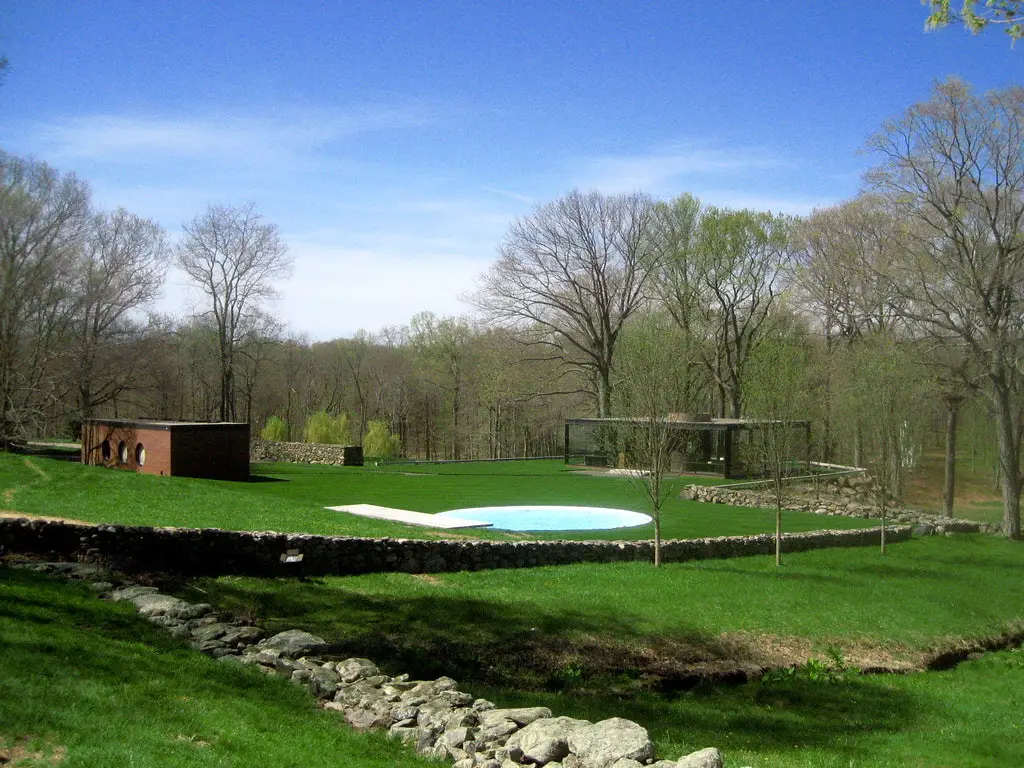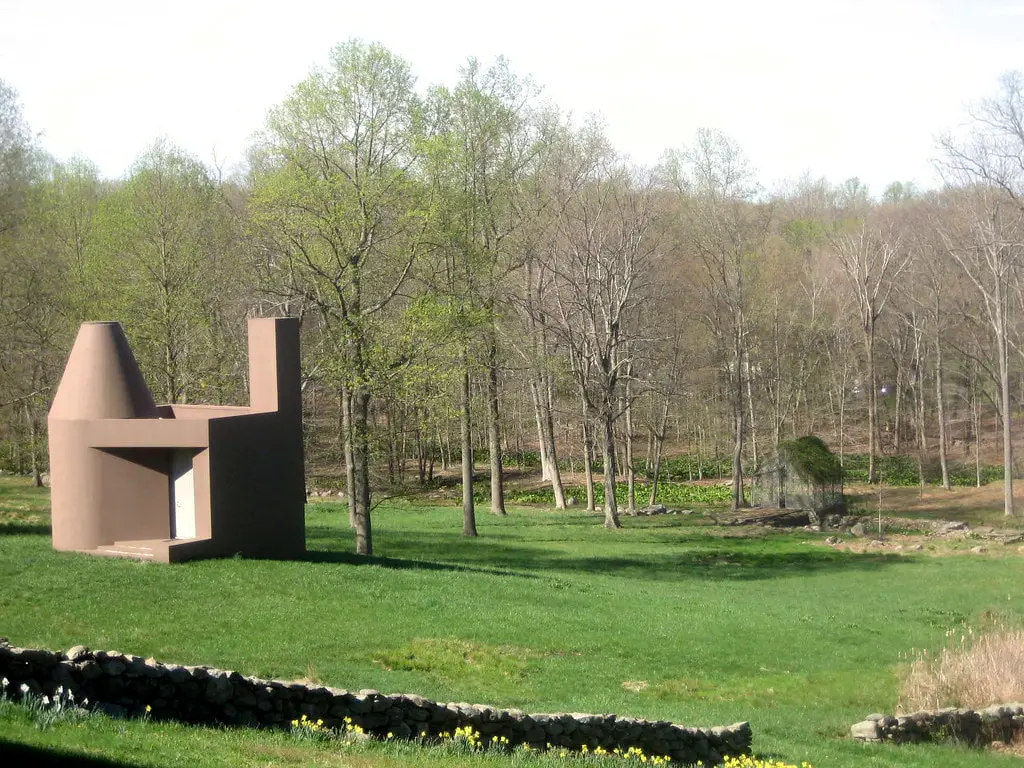The Architectural Marvel
Nestled in New Canaan, Connecticut, the Glass House is a testament to modern architecture's ingenuity. Designed by the renowned architect Philip Johnson, this structure defies conventional norms with its minimalistic design and extensive use of glass.
The house, built between 1947 and 1949, is more than just a residence; it's a living museum showcasing architectural thought's evolution over nearly five decades.
The Glass House is an essay in minimal structure, geometry, and proportion. It's a place where every corner, every angle, and every pane of glass tells a story.
The house is essentially a simple rectangle measuring 32 by 56 feet, but within this space, Johnson managed to include a bedroom, bathroom, kitchen, and areas for dining and entertaining. The design is so meticulously planned that it creates an illusion of endless space, partly thanks to its transparent walls.
The Glass House's interplay with the surrounding environment makes it genuinely fascinating. The transparent walls offer panoramic views of the 49-acre pastoral landscape surrounding the house.
This design choice blurs the lines between the interior and exterior and allows natural light to flood the living spaces, creating a serene atmosphere that changes with the seasons.
The Man Behind the Glass - Philip Johnson
Philip Johnson was an architect and a visionary who left an indelible mark on modern architecture. Johnson was born in 1906 and had a career that spanned many decades, and his work has been honored. The Glass House is a living testament to his architectural prowess and ability to push boundaries.

Johnson's role in preserving and interpreting modern architecture cannot be overstated. Serving as an agent for transformation, he consistently questioned established norms while promoting innovative approaches to design.
Managed by the National Trust for Historic Preservation, the Glass House is a fertile ground for creative exploration in architecture, landscape, and artistic expression.
However, it's essential to acknowledge that Johnson's legacy is not without controversy. His political affiliations and personal history have been the subject of much debate. Despite this, the Glass House serves as a space for open dialogue and reflection, committed to telling the full American story, including the multifaceted and sometimes complex histories where art, architecture, and social justice intersect.

The Landscape and Additional Structures
The Glass House is not just a standalone structure; it's part of a larger 49-acre landscape with fourteen other buildings. Each of these structures contributes to the overall narrative of the site, offering a glimpse into different architectural styles and philosophies.
The property also features a permanent collection of 20th-century paintings and sculptures, making it a haven for art enthusiasts.
The additional structures are the Pavilion in the Pond, the Painting Gallery, and the Study Library. Each building has its unique design and purpose, from serving as a guest house to housing Johnson's extensive art collection. These structures are supplementary and integral to understanding the Glass House holistically.
Visitors to the Glass House can explore these additional structures through guided tours available from April through November. Reservations are recommended, especially during peak seasons. The tours offer an immersive experience, allowing visitors to appreciate the intricate details and thought processes behind each building.

The Glass House vs. Farnsworth House
The Glass House often draws comparisons to another iconic structure: the Farnsworth House by Ludwig Mies van der Rohe. Both houses were designed during the same period and share similarities in their use of glass and steel. However, distinct differences set them apart and make each a masterpiece in its own right.
Johnson's Glass House is symmetrical and sits solidly on the ground, unlike the Farnsworth House, which appears to float above its natural surroundings. The walls of the Glass House are a quarter-inch thick and are supported by black steel pillars, adding a sense of permanence and stability to the structure.
The interior of the Glass House is divided by low walnut cabinets and a brick cylinder that contains the bathroom. These design elements and the brick floors are a polished purple hue, adding a touch of color to the otherwise transparent living space. In contrast, the Farnsworth House opts for a more open floor plan without dividing elements.

The Brick House - The Counterpoint
Adjacent to the Glass House is the Brick House, a structure that serves as a counterpoint to its transparent counterpart. Built from red bricks, this guesthouse was remodeled in 1953 and contains a bedroom, reading room, and bathroom connected by a narrow corridor. The Brick House starkly contrasts the Glass House regarding material and design.
While the Glass House is all about openness and transparency, the Brick House offers privacy and seclusion. Its solid walls and smaller windows create a more intimate atmosphere, making it the perfect retreat for guests or moments of quiet reflection.
The Brick House is not just an architectural afterthought; it's an essential part of the Glass House experience. It serves to highlight the versatility of Johnson's design philosophy, demonstrating how different materials and design choices can evoke entirely different emotional responses.

The Glass House in Modern Times
Fast forward to 2023, and the Glass House remains as relevant as ever. Even in the face of obstacles brought about by global health crises, the venue has modernized, notably by bolstering its digital footprint. It serves as a space for art exhibitions, educational programs, and community events.
The Glass House continues to dialogue about art, architecture, and social justice. It is a powerful space for learning, reflection, and truth-telling, committed to expanding inclusivity in all aspects of its programming and operations.
The Glass House as a Cultural Canvas
Beyond its architectural significance, the Glass House serves as a cultural canvas that hosts a variety of art exhibitions and events. While the venue boasts an enduring collection of artworks from the 20th century, it also opens its doors to short-term exhibits that provide new insights into today's art.

The Glass House is more than just a building; it's a living, breathing entity that evolves with the times. It catalyzes artistic expression, encouraging artists and visitors to engage in meaningful dialogue and exploration.
The Glass House is a beacon of unity in a world that often feels divided, harmoniously bringing together art, architecture, and community. It continues to inspire and captivate, proving that great design is not just about aesthetics; it's about creating spaces that enrich our lives and elevate our spirits.
Conclusion
The Glass House is not merely an architectural marvel; it's a symbol of innovation, creativity, and the enduring power of design. Its transparent walls serve as windows into a world where art, architecture, and nature merge into a singular, awe-inspiring experience.

As the years go by, the Glass House continues to captivate new generations of visitors, each leaving with a sense of wonder and a deeper appreciation for the intricacies of modern design. It is a timeless testament to Philip Johnson's vision and architecture's transformative power.
Ultimately, the Glass House is more than just a house; it's a journey through time and space, where every visitor can find a moment of clarity amid the complexities of the modern world.
